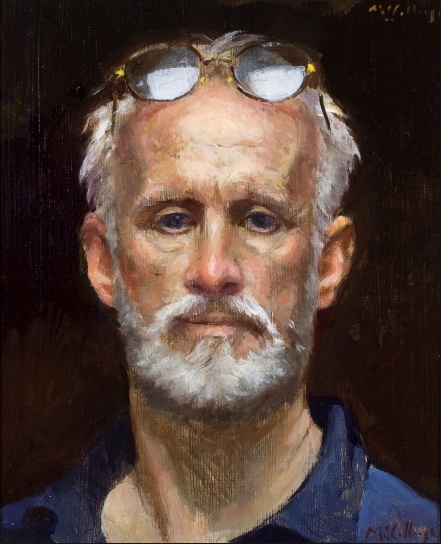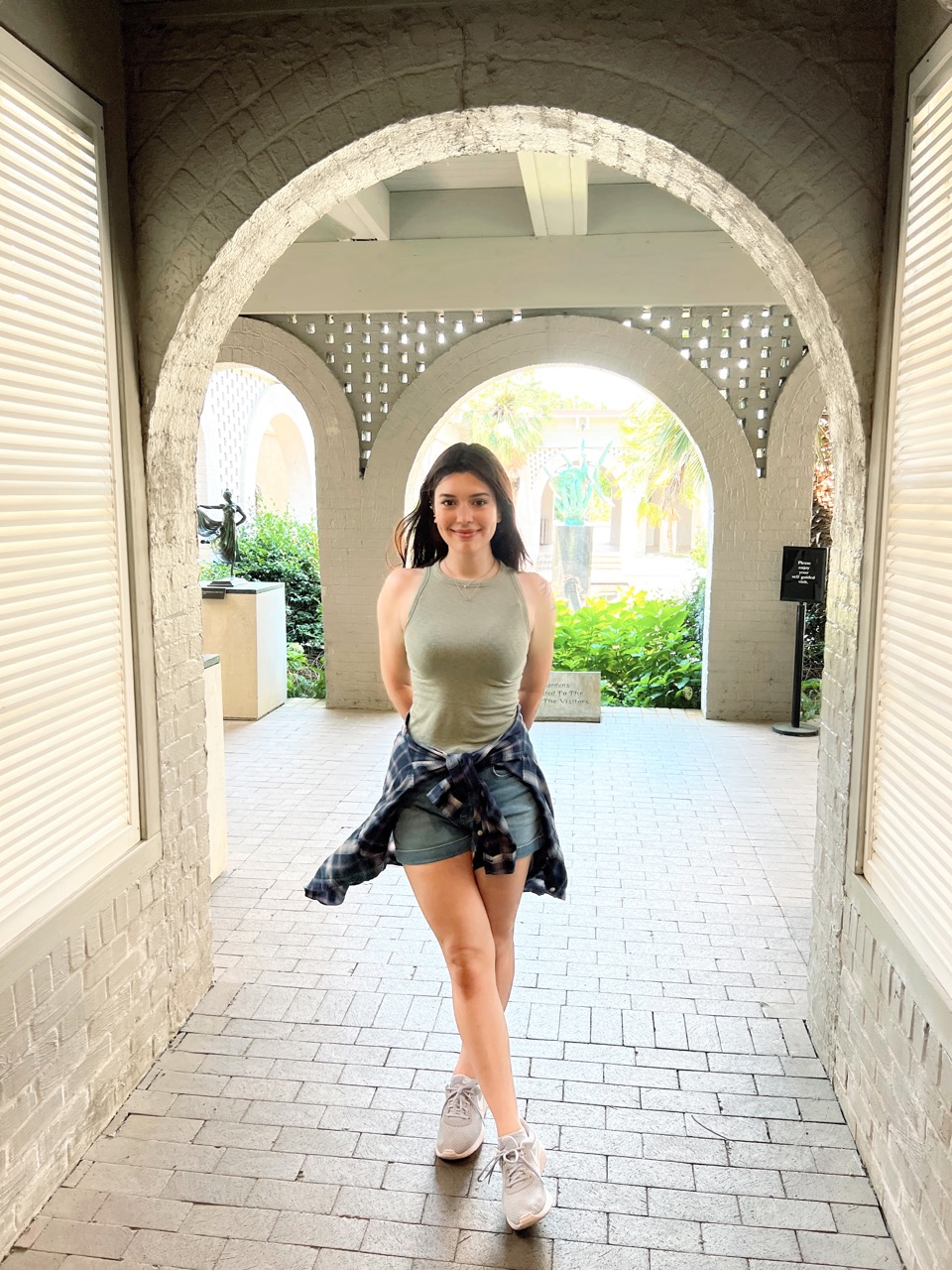Inspired by the seemingly ordinary items last touched by her beloved grandmother’s hand, photographer, Stephanie Shank’s images reveal the values of a generation.
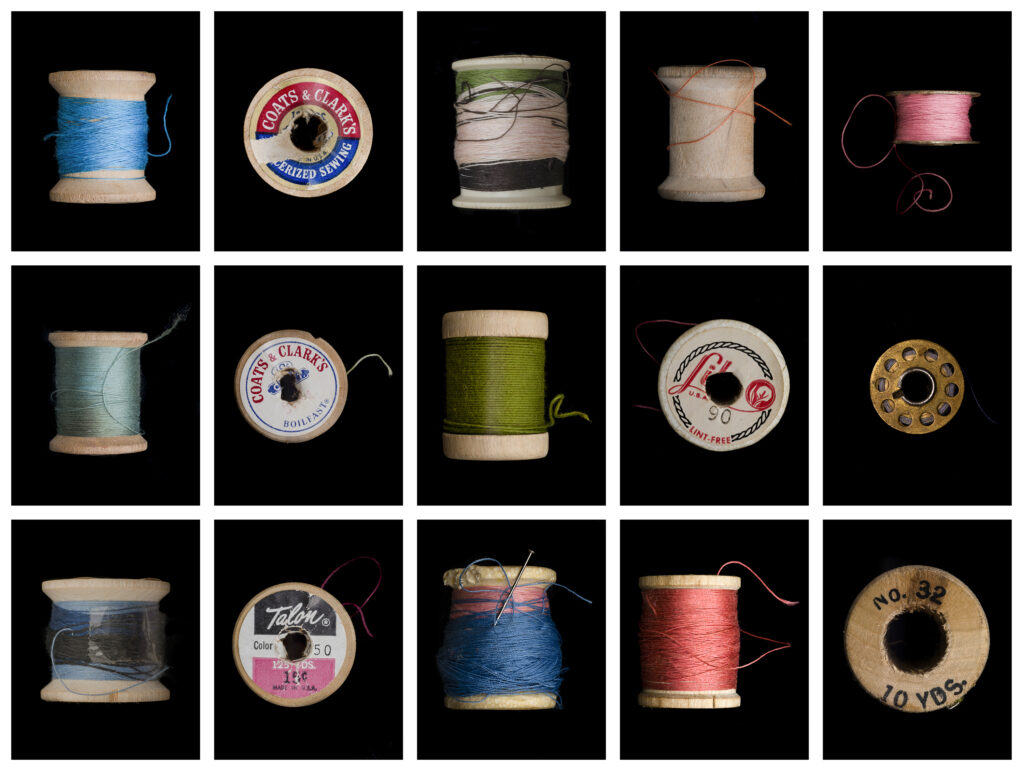
The pale blue thread that once spun at dizzying speed on the spindle atop the Singer sewing machine, now sits idle on the wooden spool. The room around it is empty. The house is silent except for faint echoes of rapid-fire stitches marching in pain-staking order across miles of fabric. When Stephanie Shank’s grandmother, June, died unexpectedly, her passing stilled the nimble fingers of a woman who found great joy with needle and thread. In many ways, her passing marked the end of a way of life. But for a few months before Stephanie Shank’s family began the process of clearing her grandmother’s house, it stood as she had left it-as though she had just stepped out for a moment.
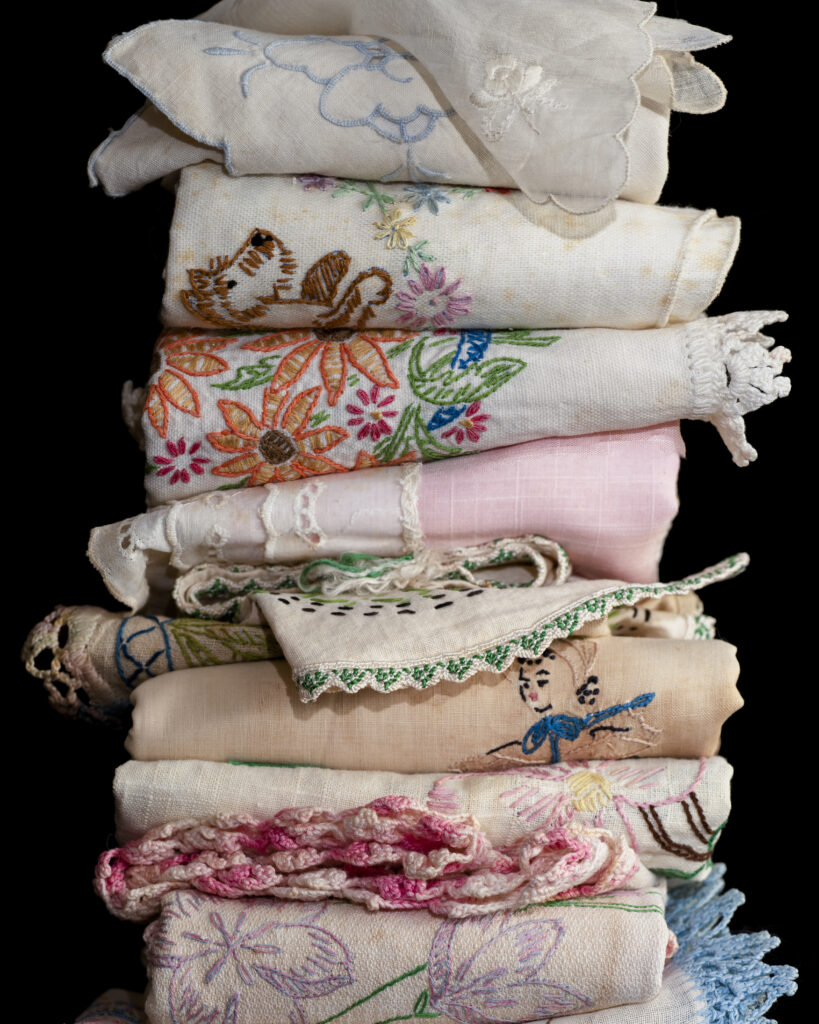
“It was very emotional for all of us,” Stephanie says of the task. “We knew that without her presence, these rooms would never again be as we remembered them.” Though the items in drawers and on shelves might seem ordinary at first glance, it struck her that the very essence of June lingered in the mismatched buttons and snippets of thread. For Shank, a photography teacher at Summerville High School, each represented a memory of her grandmother. Almost instinctively, she began to photograph these things that June’s hand had been the last to touch. As she viewed them with an artist’s eye, she realized that each item told a story of its own. As she looked through her lens at the commonplace objects, the artifacts began to tell the tale of their place in time, the way they were utilized, and the fact that their continued existence spoke of the philosophy, creativity, and perseverance of a generation. With the encouragement of her professors at Savannah College of Art and Design (SCAD), where she was at work on a Master of Fine Arts degree, the idea for her thesis began to take shape.
In June, her thesis built around a brilliant collection of images inspired by her grandmother’s belongings, Shank dug deep to find meaning in the things left behind from a life of sacrifice, resilience, and ultimately joy. In her extreme close-up, highly detailed photos, Shank focused her lens on what lay beyond the obvious form and function of familiar items, to what they represented for a generation. For those who endured the harsh deprivation of the Great Depression and a nation at war, they were precious resources to be conserved. For June’s generation, the restoration and repurposing touted by today’s home decor magazines was a necessity rather than a fashion trend. Through her photographs, Shank offered an intimate view of items held dear by those who never forgot the circumstances that taught them to repair rather than replace, to care for and make do with, or to simply go without.
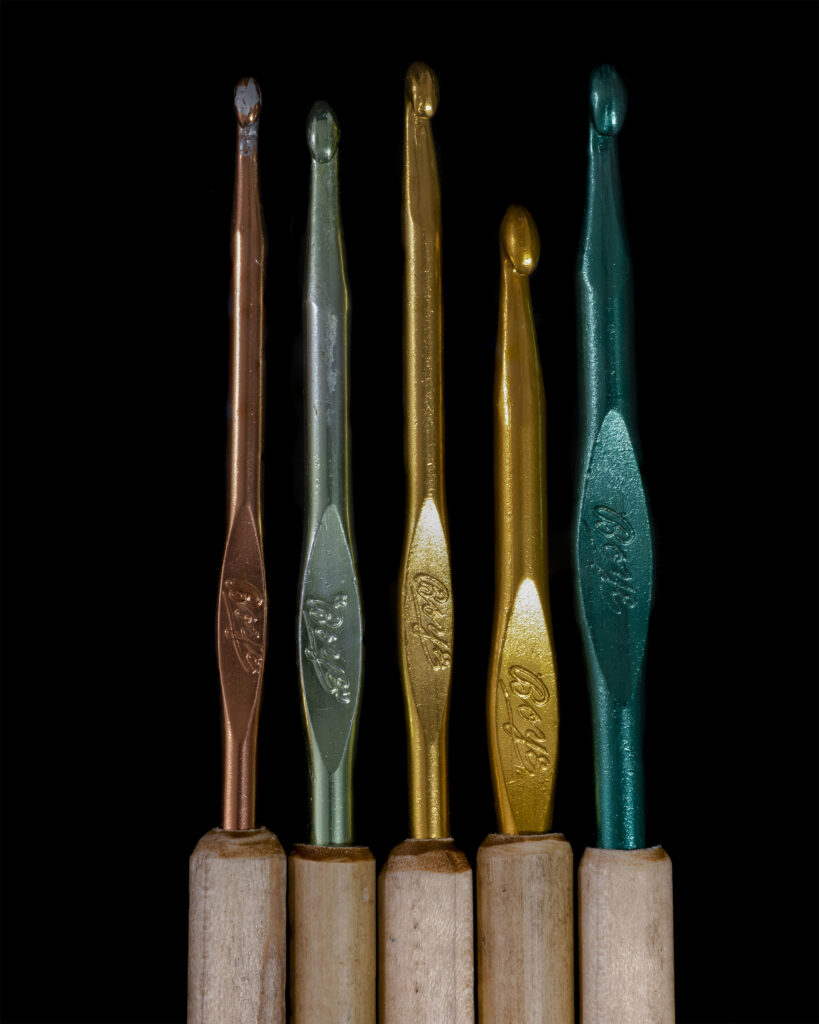
Juxtaposed against a stark black backdrop, we discover the unexpected tensile strength of pink thread spooling from a rusted bobbin, and watchfulness in the eye of an embroidery needle worn by use. “Nothing was ever wasted or thrown away. She (her grandmother) had stacks and stacks of handwritten recipe books that were crossed through and edited to accommodate what they had on hand to try and make something close to normal. We’ve lost that today,” observes the artist. “It’s too easy to run to the store for whatever we need or go to Amazon and replace anything that isn’t new and perfect.”
But there is also a joy to be found in Shank’s images, and hope to be celebrated by industrious hands that created the wishful flowers of an embroidered pillowcase, the crocheted curls of a stack of frilled doilies, the lovingly placed patches on the tattered edge of a well-used quilt, the vibrant colors of a delicately woven rug like the ones you can see here, and the intricate patterns of a hand-loomed table runner. The revelation of that softness sends us reeling back in time, evoking vague remembrances of lavender-scented hugs and powdered cheeks pressed against ours.
Shank credits her grandmother for her interest in the arts. She remembers learning at her knee to fashion roses from sweet icing for her grandmother’s beautifully decorated cakes, and June’s encouragement for her to draw and paint. “I think it was probably because of her that I took every art class possible in high school, and that’s kind of when I started dabbling in photography. I took it a little more seriously when I started college.” She did not see herself going into education, but inspired by the quality of her teachers, one month after receiving a Bachelor of Fine Arts in Photography and Ceramic Art from Clemson University, she began a teaching career. Determined to inspire her students, when tasked with teaching photography at the high school level, Shank continued her own education. A Master of Arts in Teaching from SCAD soon followed, as did National Board Certification in Early Adolescent through Young Adult Art, and a Gifted and Talented Endorsement and Advanced Placement Certification from the College Board in 2018. In 2019, she completed SCAD’s Master of Fine Arts in Photography program, which led to the homage to her grandmother.
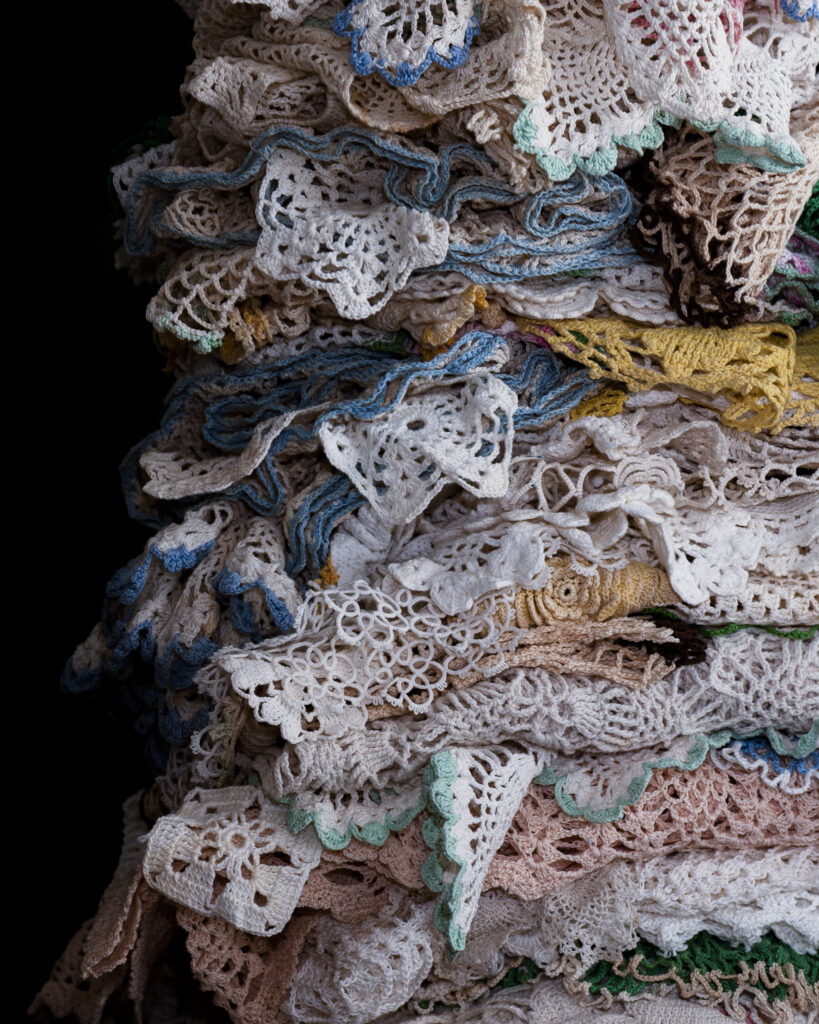
Despite the accolades and honors she and her students received through the years, Shank admits she was unsure when it came to an exhibit of the photographs presented in June, a project that had been so deeply personal and fraught with emotion. According to visitors to her exhibition this past summer in the East Gallery of Public Works, downtown Summerville’s newly opened art center, Shank’s fears were completely unfounded. “I’m finally getting to the point where I’m comfortable sharing (my work),” she says. “But when you’re putting yourself out there, it can be pretty intimidating.”
We are the beneficiaries of that newly found confidence. June’s is a story worth telling, and it is told beautifully through Stephanie Shank’s images. In June, we not only receive the gift of Shank’s outstanding photography; but we are also offered the opportunity to learn from the lessons of a generation whose values we would do well to imitate. It leaves one to wonder. When the things we keep are left to tell who we are-what will our story be? AM
by Susan Frampton


